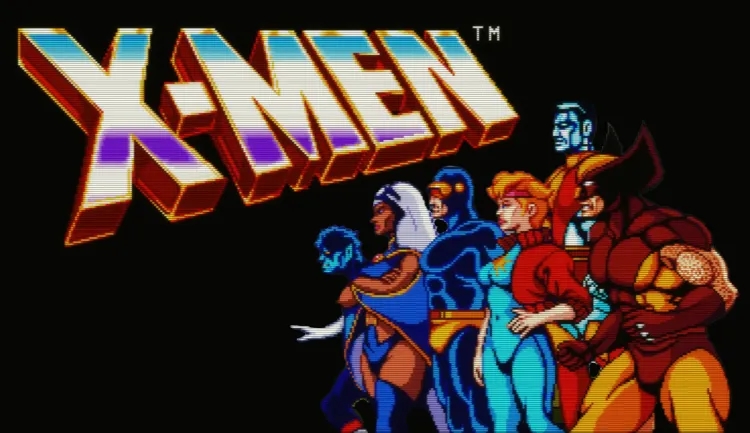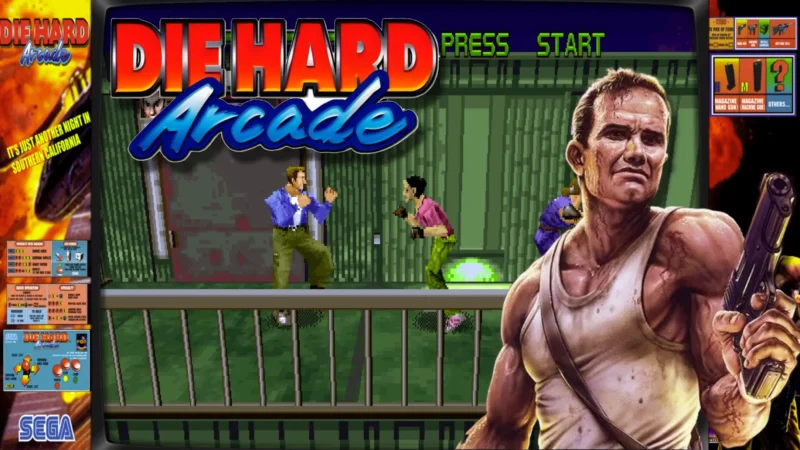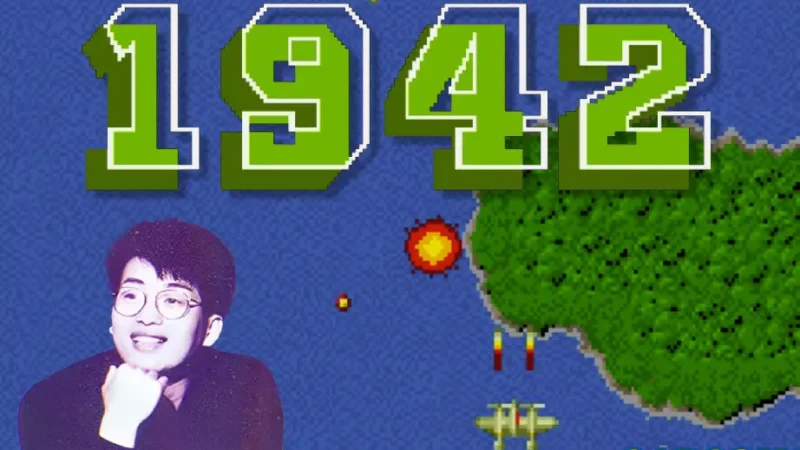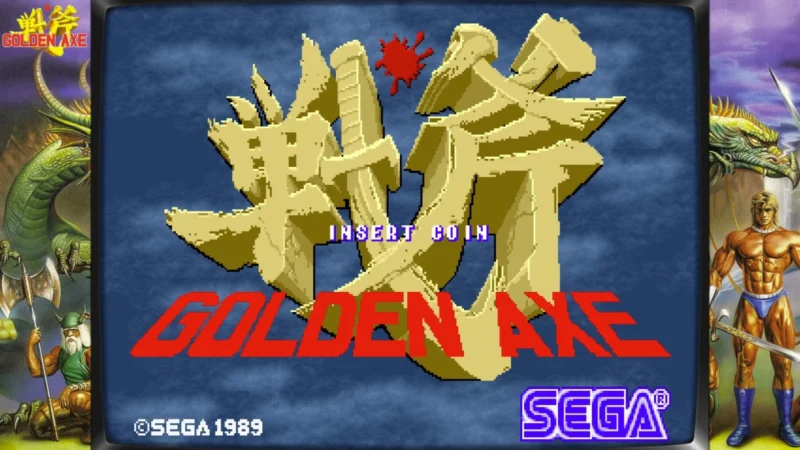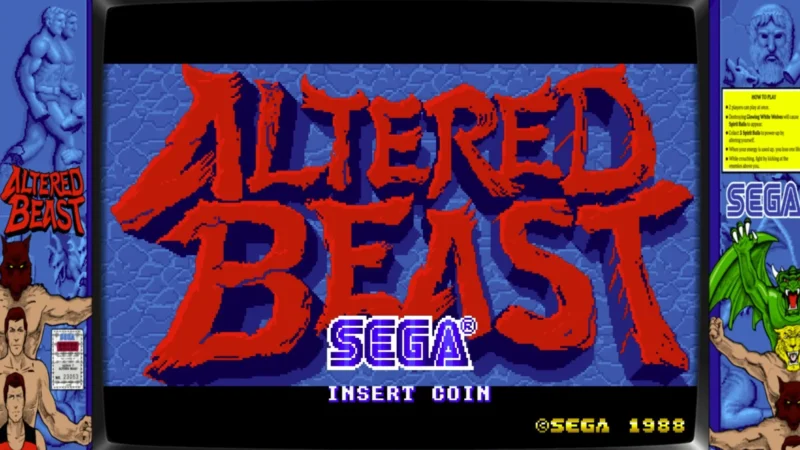Raptor: Call of the Shadows – History & Development
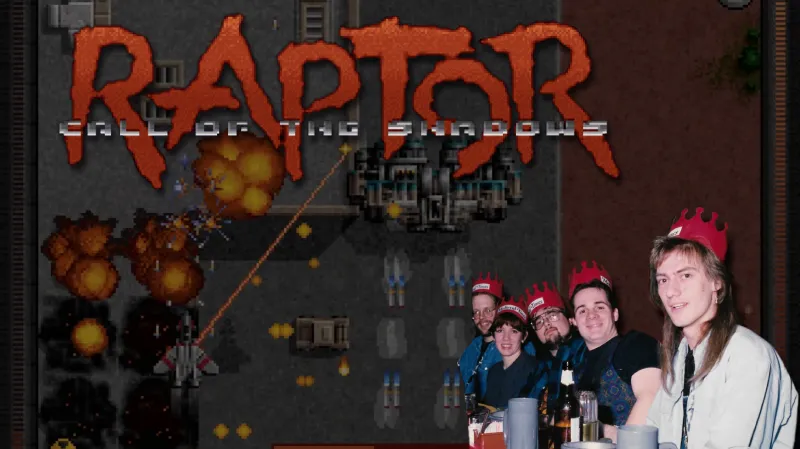
This one is special. I was able to connect with Scott Host, creator of Raptor: Call of the Shadows, and talk directly to him about the history and development of Raptor and the games that came before and after it. I’ve tried to condense hours of interview material into this post. If you’re a fan of Raptor: Call of the Shadows like I am, you’re going to learn a lot about it that has never been published.

Photo credit: Scott Host
Quick Note About My Raptor: Call of the Shadows Experience
The shareware version of Apogee’s Raptor: Call of the Shadows came into my home in 1995 by some means that I’ve long since forgotten. My family’s Hewlett-Packard computer was brand new and I was working my way through learning Visual Basic on it while playing some amazing DOS games that required a special boot disk to take advantage of the additional RAM and the CD-ROM in the machine. I threw the Raptor disk into the floppy drive and booted up a game that would, for many years, be one of my favorite PC games.
The history of Raptor: Call of the Shadows starts with some other kids who grew up a few hundred miles to the east of me.
The Early Years of Cygnus Studios
As kids, Scott Host and Matt Murphy caused havoc on the streets of Hickory Hills, Illinois. Matt would walk around the neighborhood with a ripped up shirt and pretend to turn into the Hulk, scaring off little kids with his terrifying screams while Host would occasionally turn his mom’s plant sprayer into a homemade flamethrower and use it while his mom was out of the house. The two would also have BB gun and bottle rocket fights while trying to scale Danger Hill.

Photo credit: Scott Host
Host was also a fan of building models, especially planes, which he’d build and then hang from the ceiling of this room.
The sense of danger and adventure Host and Murphy as kids would slowly turn as they both found a new obsession: video games.
A Passion for Video Games
Scott Host fell in love with video games as a kid, but it was one special genre that really stuck out to him. “When Space Invaders came out, I thought, ‘Oh my God, I can shoot aliens on a screen.’ Then Galaxian and Galaga came out, followed by Raiden, and that’s when I knew that I loved shooters.”1
And then things all changed when Host got a VIC 20 computer. That started Host down the road of not only playing games, but also learning how to code them. “I tried to make some games like Centipede, space shooters, a Star Trek-like game, and then I made a drawing program to animate spaceships blowing up,” Host said, recounting the early days. “I didn’t know enough to finish a game or how to sell it, so I did a lot of ‘experiments’ just to learn, because it felt impossible to sell a game at that time.”1
Over the following years, he upgraded to a Commodore 64, then a Commodore 128, an Amiga 1000, and then finally a PC with an Ad Lib sound card. Now, instead of chasing each other around with lit Roman candles and BB guns, the Host and Murphy started making digital music with Host’s new PC.
Cygnus Studios and Galactix
The two would continue to tinker with different ideas and continue to create music until Host came up with a game called Lethal Domain, which was a side-scroller. After working on the game for months, the unthinkable happened. The disk he was saving the game on became corrupted, and the entire game was lost.
“I screwed up the floppy drive it was saved on, and I just lost the whole thing.”1

After mourning the loss of the game and months of work, Host started on a new game, this time wanting to create a vertical shooter/shoot ’em up (shmup) similar to the games he loved playing as a kid. Host developed the game while he and Murphy had worked together on the music. Host also had his Dungeons & Dragons group help with some graphics (they will come back later in this story.)
Working on the game in his spare time over the course of 2 years, Host finished Galactix. To distribute the game, he opted to release it as shareware on Software Creations BBS (bulletin board system), which was an early online bulletin board for downloading shareware games.
To take orders, he needed a company name. Host looked at naming the company after a constellation, so he looked through an astronomy book where he found the Cygnus constellation. That piqued his interest, because he was also a fan of Disney’s movie The Black Hole, which featured the USS Cygnus as the main spaceship. Thus, Cygnus Studios was born.

Photo credit: Scott Host
Galactix was uploaded to Software Creations BBS in 1992 and Host got a P.O. box to receive orders. After a few weeks of checking the P.O. box and finding it empty, Host realized that instant success wasn’t going to happen and that he would probably have to keep his job at a software company making banking software.
“I’d go to the P.O. box after work and it was always nothing, nothing, nothing.”1
Galactix Takes Off
That all changed when he strode into CompUSA one day and did a double take at the magazine rack. There, on the front cover of Shareware Magazine, was a screenshot that looked awfully familiar.
It was of Galactix.

Photo credit: Scott Host
“That’s my game!” Host exclaimed. “Oh my god, I almost fainted. So I bought a stack of the magazines.”1
“A couple days later I went to the post office and asked if I got any mail. The guy goes ‘Yeah, hold on’ and goes into the back and comes out with a big bushel basket of orders and I was like ‘Oh my God! This is gonna work!'”1
Host and his mom then worked to fulfill all of the orders, with Host copying floppy disks and his mom putting on the labels and them both mailing them out.
The game garnered a lot of attention, with Host getting approached by Westwood studios first, who offered him a role, but refused to give him creative control over his games. They offered him a position at an annual salary that was less than he was making selling Galactix, and his choice became easy. He told them, “Nah, I’m not interested.”1
Working with Apogee
Apogee liked what they saw in the game, especially since it had followed the shareware model they were known for. They wanted to bring Cygnus Studios onboard for a new game, offering Host an advance to get things started.
“(Apogee founder) Scott Miller called me and it sounded like more of what I wanted to do.”1

But instead of another vertical shooter, Host decided to do something he’d always wanted to do: a role playing game (RPG). And Apogee had a partner with the latest technology Host wanted to use.
Apogee had released id Software’s classic Wolfenstein 3D earlier in 1992, and Host asked if Cygnus Studios could use the game’s engine for the new RPG. The folks at id Software agreed. The upgraded Shadowcaster Engine became the foundation of the new game: Second Sword.
Host had always wanted to make an RPG, but there was one major factor that held it back. “I tried to make RPGs too, but I kept failing at that because it just took too long,”1 Host said with a laugh.
But now he had a groundbreaking game engine to build in and the backing of a publisher that was on the rise. What he needed now was a team.
The Cygnus Studios Team
Host didn’t start working with Apogee alone, but he also didn’t initially have Murphy onboard. Murphy’s main focus had been on creating music and sound, so for the time being, Host was on his own to bring together a team.
And what better place to recruit ragtag group of game fans that would turn into developers than his Dungeons & Dragons group?
Tim Neveu, Jim Molinets, and their dungeon master Rich Fleider all agreed to join Host in working on the next game, with Neveu joining first. In fact, at just the mention that Host might be able to hire one of them, Neveu went out and quit his day job the next day. So he was brought on to help create Second Sword with Host.
Second Sword Turns Into Mercenary: 2029
Second Sword would feature a first person perspective like Wolfenstein 3D, and development of it got underway between 1992 and 1993. Since Cygnus Studios was using the id Software’s Shadowcaster Engine, id Software reached out to them.
id Software’s John Carmack and John Romero had a hit with Wolfenstein 3D, and their next game, DOOM, was shaping up well when they invited Host and the rest of the Cygnus Studios team to join them in their offices in Texas.
“[id Software] paid for all of us to go down there [Texas] and we were on the same floor as them,” Host recounted. But Apogee was unaware of the new arrangement.

(from left: Dave Taylor and John Carmack (id Software) Rich Flieder, his girlfriend, Jim Molinets, Tim Nevue and Scott Host (Cygnus Studios))
Photo credit: Scott Host
“We went to the Apogee office one day with Romero and a couple other id Software guys and we were talking to Scott Miller and he didn’t recognize who I was. So Romero introduced me and said, ‘By the way, this is Scott Host.'”1
With Cygnus now literally sitting next to the developers of their game engine, surely nothing would stand in the way of getting Second Sword completed…
One of the games Host was playing a lot of was Origin’s classic RPG, Ultima VI. Second Sword was going to have a similar vibe to that game, as well as Ultima IV and Ultima Underworlds I & II, but what really got Host was that the game featured a speedy and smooth (at the time) intro with animations behind panning movements. Host wanted to emulate how quickly the sprite transitions happened to create a smooth cinematic sequence.
“The intro to Ultima VI made me think ‘how the hell did they do multiple layers of transparent sprites so fast?” Host would later recall.
Host originally tried doing some of the fast sprite routines in Galactix, but now he wanted to really give it a shot. But instead of trying to incorporate them into Second Sword, he got inspiration from the plane models he used to build as a kid.
Host and Neveu worked on a new tech demo to create faster sprites using blocks of the screen transitioning instead of individual pixels. The tech demo turned into a demo of a vertical shooting game.
Host gave the demo a name: Mercenary 2029
The demo could have sat on the shelf for another time, but Host showed it to the Cygnus Studios team and some of the folks at Apogee.
“Everybody liked it,” Host would say about the Mercenary: 2029 demo. Apogee wanted to see the game made, but there was a pretty big problem.
“We were four people and there’s no way we could be working on two games.”1
And just like that, Second Sword was cancelled and Mercenary: 2029 became the game Cygnus Studios would work on next.
Mercenary: 2029 (Raptor: Call of the Shadows) Takes Shape
Making an RPG Shmup
Host knew the shmup genre like the back of his hand. But coming off the development of an RPG, those elements were hard to shake. Upgrading a ship in most vertical shooters or shmups requires starting a level with basic weapons and upgrading throughout the level, only to lose them again. Instead, what if the player could upgrade their weaponry and keep it from level to level?
And what if there was an economy and a merchant to buy and sell from?
“Putting RPG elements into a shooter was an easier route to take than just developing a full-blown RPG,”1Host would laugh.
The answers to these questions came fairly quickly. The credits to buy things would come from destroying ships and buildings, while also collecting items throughout levels. The more things you blow up, the more credits you have to spend.
Between each wave of missions, the player would be able to purchase or sell weapons in the Supply Room of the hanger.

Some weapons could be always equipped, like the mini-missiles, but others, like the tracking turrets, would be selectable. Only one selectable item could be active at one time.
The game would be set in three separate Sectors, each one in a different location with different ships and scenery. Each sector consisted of 9 waves, with each wave having a final boss to fight.
Take a Licking and Keep on Ticking
Another huge RPG crossover mechanic set Raptor: Call of the Shadows apart. Unlike most shmups, Raptor would not be a one-shot, one death game. Instead, it would feature a health bar as well as the ability to buy shields to protect your ship from enemy fire. This mechanic would enable players to choose to either buy up shields and be more aggressive (tank), or invest in firepower without shields to be a glass cannon.

“It always bugged me that one shot could kill you,” Host said. “The jet fighters in a war could get hit by bullets and keep going. So this felt more realistic.”
Save Your Work
Another RPG element added to the game was the ability to save your progress as you went. Players wouldn’t need to beat the game in a single sitting, which was the case with most other shmups at the time. Instead, the player could save the game between each wave of enemies and continue later.
Graphics Work…and Re-work…
Host had created the graphics API for Galactix, which he called GFX API. This proprietary engine gave the team the tools to create rich, smooth graphics within the game. It was able to smoothly display 256 simultaneous color VGA graphics, which was the same as SNES. At the time, PC gaming was seen as behind console gaming in terms of graphical quality, so being able to match and even beat the SNES was a big deal.
Tim Neveu had left his previous job when Host merely mentioned the possibility of hiring him. Neveu’s leap of faith landed him in as the first artist on the project and he created the death scene in the game and Host recalls that he also did a lot of the work on the famous intro scene of the game (a scene that Host admits is an homage to the intro of Blade Runner.)

Rich Fleider had actually helped Host by drawing the news guy and Xidus guy on paper for the intro of Galactix, which Host then digitized. Now, Fleider was in charge of creating the art for the game digitally himself. As new ships were created, Host pushed the team to revise a lot of the artwork, including one ship that was featured in the demo of Mercenary: 2029.

“That’s something they got mad at me about. Like the banana ship. I kept telling them, that it looks like a banana and it needs to look grungier.”1 Host said.
The game went through a lot of visual overhauls, with the player’s vehicle itself getting an overhaul from the demo to look more like a real fighter plane.

The Sweet Sounds of Game Development
Creating sound packages for games in the early 1990’s was no small feat. The challenge of getting actual audio in a game, and working on various hardware was incredibly complex.
That’s how Paul Radek got involved in the game.
Host had met Paul Radek at a previous job and he knew that Radek could write sound a music routines that were beyond his ability at the time. Radek took on the challenge, programming all of the sound and music for the game so it would flow seamlessly and immerse the player in the gameplay. He called the sound library DMX.
Radek did the sound routines for the game in his spare time and never moved to Texas with the rest of the team. His contribution ended up going beyond Mercenary: 2029, as id Software liked the routines so much that they used his DMX sound library in their upcoming game, DOOM. Later on, the decision to use DMX in DOOM became a source of contention.
Mercenary: 2029 now had the ability to have sounds, but it still needed a soundtrack. So host called in an old friend to help out.
Matt Murphy flew down to Texas and joined the Cygnus Studios team for a short stint to create the music for the game. What would have probably taken another artist weeks or months to do.
Murphy and Host did the soundtrack in 3 days.
The soundtrack that later became one of the most recognizable aspects of the game was simply thrown down in a blaze of creativity shared between two childhood friends.
Mercenary Becomes Raptor
In the summer of 1993 Host, id Software and folks at Apogee decided they were going to see the latest summer blockbuster: Jurassic Park. After enjoying the movie, Host was struck with an idea.
“I was walking back to my car and I was like, ‘Raptor…Rapter…RAPTER!!! That’s it! Oh my God, that means ‘bird of prey’ too! That’s perfect!‘”1 He brought the name back to Cygnus Studios where Jim Molinets, who did the writing in the game, as well as some level design, added the tagline “Call of the Shadows” as a means to show the darkness calling you because you play as a mercenary.
And so, Mercenary: 2029 became Raptor: Call of the Shadows

Photo credit: Scott Host
Trouble Brewing in the Shadows
“I went from living at home to managing 3 people in an office at 25 years old. I didn’t have any idea what the hell I was doing.”1 Scott Host, Lead Programmer of Raptor: Call of the Shadows
Raptor Play Testing
The first person who tested the game was a friend of Cygnus Studios from the electronic boutique at the mall. The team brought him back to the studio and asked for his feedback.
“We set the guy down and he’s playing it, and within 5 minutes I can tell he’s bored out of his mind,” Host recalled. “I was like, ‘We’ve got a lot of work to do.'”1
Graphic Debates
Between Host, Fleider and Neveu, there were often conflicting visions for what the game should look like. Though the graphics being created looked great by any other standard at the time, the overall feel and tone of the game was a source of contention.
“I wanted Raptor to be a lot darker, but everybody was against that,”1 Host would later recall.
Differences in opinion and constant reworking of graphics demotivated the team. Entire days or weeks of work would be wiped out and restarted as the game evolved. Host would later say, “The reason it wasn’t working wasn’t because people were bad at their jobs. It wasn’t working because they were all demotivated.”1
Level Creation
One of the biggest takeaways from the play test was the level design. Molinets had created levels that included symmetrical ship formations, which were featured in other shmups at the time. However, those formations would lead to users being able to stay in static positions without having to worry about getting hit.
“You should lead the player from side to side and keep them moving. The initial level design didn’t have that.”1
Host and Fleider decided to stay after work until 2am redoing those levels. The next day, Molinets took exception to the pair redoing his work. Issues like these started laying the groundwork for future disagreements and confrontations.

The role of level designer also got flipped as Neveu and Fleider designed the two other sectors (Tango Sector and Outer Regions) on graph paper and Molinets would then use the level editor program Host made to get them into the game. Ultimately, Molinets would get credit for the level design.
More Ships
Another takeaway from the play test was that the game needed a broader mix of enemy ships and different worlds to fly over. These assets were added over the next 6 months. This increased the timeline of the game, which by this point had already been in development for nearly 2 years.
And in that 6 months of additional development, another huge event occurred.
DOOM Changes Everything
Cygnus Studio’s office neighbors, id Software, launched DOOM on December 10, 1993. To say it was a massive success would be an understatement. Nearly overnight, the id Software team all became rich and famous, with many of them showing up to the office in the following months in brand new sports cars. The Cygnus team was now surrounded by developers who had “made it,” but they knew that their game simply wasn’t that great.
With id Software’s great success, paranoia and pressure permeated through the Cygnus team. Raptor was behind schedule and now in the shadow of DOOM. It also put pressure on the team to simply get it out the door and start on the next project, which hopefully would go better. (Spoiler: It wouldn’t.)
The last few months of work were stressful, and a lot of the game was redone to make the gameplay more fun. However, in the haste to complete the game, Host was unhappy with the final product. “To me, it always felt like an unfinished game. It was unbalanced.”1
Regardless, they decided to launch Raptor: Call of the Shadows to the public and move on to the next game.
Raptor’s Reception
On April 1, 1994, Raptor: Call of the Shadows launched in the shadow of DOOM. Despite this it was still able to peek out into the light and stand on its own. Reviews for the game were favorable, with many reviewers citing it’s use of RPG elements in a shmup format and generous save feature. GameFaq gave it a 9/10, claiming, “Raptor is a game that will always hold a special place in my heart,” and “its mechanics are solid as a rock. I highly recommend picking it up”.3
Apogee’s Scott Miller would go on to say that Raptor: Call of the Shadows sold around 80,000-90,000 copies through Apogee alone,4 making it one of Apogee’s most successful games, and selling more copies than Commander Keen and the original Duke Nukem.
Legacy of Raptor: Call of the Shadows
After the launch of Raptor, Cygnus Studios would be put in charge of creating Strife, a first-person shooter/FPS that seemed to follow some of the original ideas for Second Sword. However, shortly into the production of Strife, the creative differences that started with Raptor boiled over. Tim Neveu was pushed out of the company
Shortly afterward, Jim Molinets and Rich Fleider left Cygnus Studios and formed Rogue Entertainment. Scott Host would leave Texas and return to Chicago. He renamed Cygnus Studios to Mountain King Games and made a deal with id Software to get back the rights to Raptor: Call of the Shadows.
And who would end up making Strife? Rogue Entertainment.
Host would go on to work on an RPG called Mantra with Matt Murphy, but just like Raptor, ended up putting it on hold to create a shmup called Demonstar, which he completed in one year. And despite what even the box says, Demonstar is NOT a sequel to Raptor. It’s a stand-alone title with nothing to do with the Raptor universe.

Photo credit: Scott Host
A Special Thanks to Scott Host
I am very grateful to Scott Host for sharing the history and development of Raptor: Call of the Shadows with me and allowing me to bring it to the world. He is currently working on an upgraded version of Demonstar, which you should check out. At some point, Raptor: Call of the Shadows REMIX will be happening, and you better bet I’ll be one of the first to buy it.
References:
- Retro Gaming Geek Interview with Scott Host – 7/30/2025
- https://legacy.3drealms.com/history2.html
- https://gamefaqs.gamespot.com/pc/565052-raptor-call-of-the-shadows/reviews/27671
- https://www.gamedeveloper.com/programming/20-years-of-evolution-scott-miller-and-3d-realms

